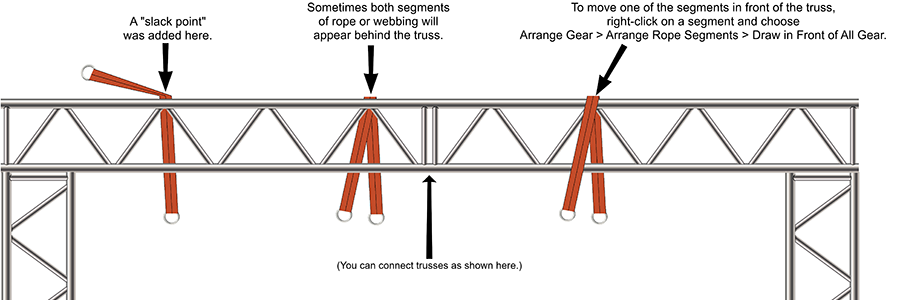
This also applies to cable, chain, and webbing.
Gear that is anchored includes anchors, rocks, trees, tripods, trucks, etc.
A "bight" is a simple loop in a rope that does not cross itself.
A "bend" is a knot that joins two ropes together. Bends can only be attached to the end of a rope.
A "hitch" is a type of knot that must be tied around another object.
"Descending devices" (e.g., ATCs, Brake Bar Racks, Figure 8s, Rescue 8s, etc) create friction as their primary purpose. The friction in descending devices is always considered when calculating forces.
The "Safety Factor" is the ratio between the gear's breaking strength and the maximum load applied to the gear (e.g., 5:1).
vRigger includes a truss. Trusses can be resized and connected end-to-end.
Trusses do not have fixed rope connection points. Instead, use slack points to place these items on a truss.
Webbing and rope segments are often displayed on the "wrong" side of the truss (i.e., with both segments either in front or behind the trust). As explained in the following illustration, you can right-click on a rope segment and choose to display it in front of, or behind, the truss.

Download the truss sample file for more information on working with trusses.